- Getting around Lijiang. Dont stay in the Old Towns more than 2 days, there is nothing to do. KRISS Oct 9, 2013 05:46
- 2013 Beijing Temple Fair BENNYLAU Feb 26, 2013 03:29
- Malaysian traveling from KUL - LAX vis Shanghai PVG ZATI_DY Jan 3, 2013 20:15
Anji County - Addicted to Bamboo
- Views: 9358
- |Vote: 0 0
- |Add to Favorites
- |Recommend to Friends
Bamboo Memories
It was in England, in a garden I designed myself, that I planted my first bamboo. I watched it mature and saw the subtle changes over the seasons much as I imagine a mother might watch her growing child. I knew it intimately – and loved it. One of my greatest pleasures was to sit under the stars, sipping red wine and listening to the breeze tangling through my darling clump of black-stemmed bamboo.
Over 2 years and 9000km later and I am listening to a playful breeze hushing through the exact same species, Phyllostachys nigra, their ebony-hued stems pointing skywards. It feels like greeting an old friend.
I am in a garden in Anji (安吉) County, home to one of the largest areas of bamboo forest in China and a must-see for anyone who has a soft spot for one of the most graceful and versatile plants on Earth.
A treasure trove of bamboo...
Anji Bamboo Museum Garden (竹博园) is a treasure trove of bamboo. With over 300 different species in an area of 40 hectares, it is the largest and most diverse garden of its kind in Asia.
Originally a base for the research and classification of bamboo species from all over the world, the garden was used to receiving many visitors from home and abroad. In the 1990s, recognising the potential for tourism, the centre was transformed into a scenic spot in its own right, with an emphasis on the history and culture of bamboo in China.
Today, the garden and museum are a valuable resource for visitors who want to understand more about bamboo culture. Those in charge have managed to keep tourist gimmickry to a minimum and allow people to wander around largely unmolested, to enjoy the beauty and peace of the surroundings.
...
There is no direct bus to the Museum Garden, but a public bus will drop you on the side of the road at a dirt track and point you along it. A few hundred metres later and you will reach the entrance. There is a large car park, filled as usual with tour buses and surrounded by small souvenir stalls and restaurants. The stalls sell a mind-blowing array of bamboo products – from chairs to chopsticks – and everything in between.
A huge sculpture of a cockerel, made entirely from bamboo canes, greets visitors with its proud red wattle and magnificent tail that must reach 15 metres in height.
From here it is possible to lose yourself in the narrow snaking pathways that take you up close to the bamboo or take a ride in one of the electric golf-buggy type buses that ply the main road around the park.
Paying 10RMB for a whirlwind tour of the park is not my idea of a good time and so I find myself drawn to the shady walkways where I can rub shoulders with what I have come here to see.
Corridors of bamboo form shady retreats...
The bamboo is carefully labelled in Mandarin and its (usually Latin) botanical name. I am in heaven. Not only can I reacquaint myself with many familiar species, some of which I have never seen outside of a book, but I also discover new varieties, many of which have been named after Chinese plant hunters and scientists.
Even for the layperson, to whom both the notes and names are meaningless, it is possible to appreciate the many different qualities of bamboo.
There is no sound quite like that of the wind in bamboo. The timpani of branch and leaf lulls the listener like a million tiny waves breaking. On this hot, bright day the corridors of bamboo form shady retreats of cool air. The many small gazebos scattered amongst them being a perfect place just to sit and contemplate.
If this is not enough, the variety and beauty of the bamboo itself will surely catch even the hardest eye. Whether it be the dwarf, fat leaved Sasa covering the ground in a dark green mass or the tall slender Phyllostachys creating archways of gold. Phyllostachys sulphurea has stems of intense yellow and Phyllostachys heterocycla is like a child’s toy, its narrow canes are building blocks patterned in pale yellows and greens. Perhaps strangest of all is the variety named “Mitford” that has shiny black-green bulging stems as though it is made of hundreds of dark stones piled on top of each other.
The story of Meng Zong (孟宗)
Aside from the bamboo, there are gardens set amongst the groves, with the classical white bridges and flowing streams of Chinese design. One such garden opens out into a courtyard where a bamboo house stands. The roof is thatched with bamboo and the house is edged with banana plants. Under this tropical blue sky, I feel that I might be walking through a plantation.
There is a story here from ancient China about a man called Meng Zong (孟宗). His mother was widowed and brought him up by herself. They lived in just such a hut in the bamboo forest together and were devoted to each other. One day Meng Zong came home to find his mother seriously ill and unable to eat anything. Day by day she got worse and Meng Zong was helpless. His mother begged him to make her some soup using fresh bamboo shoots, but it was mid-winter and there were no new shoots to be found. In despair, Meng Zong ran into the forest, sat amidst the bamboo and wept. Miraculously, from the place where his tears fell, new bamboo shoots began to grow. Overjoyed, he was able to take them home and make his mother some soup. After a few days of drinking the soup made from these unseasonably early shoots, his mother recovered. Henceforth, the two of them devoted their days to the care of bamboo.
Green Lake
Green Lake (翠湖) is a small tranquil lake that sits amidst towering pines, grassy banks and is edged with the trailing fingers of willows. Huge ornamental carp drift beneath the surface: lazy and colourful. Swinging seats and wooden picnic benches dot the grass and I buy a bottle of mineral water from the small cafe here. In the more secluded spots, safe between the rocks, there are turtles. Relaxing, I watch one that is sat on the bank, its dark shell seems much paler in the strong sunlight but I can still see the dull orange and cream bands decorating its skin. Its head is lifted towards the sun with eyes closed, as utterly absorbed in basking as I am in watching.
The garden itself centres around a much larger lake where it is possible to take a boat ride out or cross the springy wooden bridges to get to a central pine-filled island. A few small restaurants and shops cluster at the far end. There is a walkway around the lake edged with many bonsai trees, a children’s park with unusual climbing frames made entirely of bamboo and a rather dilapidated greenhouse, musty with neglect.
Here there is also a tiger, a real tiger, though I have to look twice. A youngish girl and boy keep watch over it and offer photographs with the tiger for 10RMB a time. This I do not understand. I pass by with as much distance between me and the tiger as possible – I do not see any restraints.
The versatility of bamboo...
Having always admired the grace of bamboo on an aesthetic level, it is fascinating to discover the importance of bamboo in Chinese culture and history. From the philosophy of Confucius to the Buddhist tenets. From the poetry of Su Dongpo (苏东坡, also known as Su Shi, 苏轼) who once wrote:“I can not live without bamboo” (不可居无竹) to the menus of restaurants all over the South of China. From tourism to trade. Bamboo has been inextricable from the lives of millions of Chinese for around 6000 years.
Bamboo is invested with spiritual and philosophical meaning. Peace, tranquillity, contemplation, modesty, nobility, determination, stability, longevity and vitality. It is the subject of stories and legend and the muse of poets and painters.
With over 1500 documented uses, the versatility of bamboo is almost limitless. The Chinese used bamboo to write on before the advent of paper because it was a strong and abundant medium. As a food it is nutritious and in Chinese medicine it can relieve heat and aid many complaints. Bamboo is used to make traditional Chinese musical instruments and there is a bamboo weaving tradition that dates back almost 2000 years.
The museum here displays a good amount of this history, albeit in Chinese, through a number of halls that cover bamboo in various contexts: History, Art & Literature, Craft, Common Use and International.
In the museum entrance are the stems of Dendrocalamus sinicus, the largest bamboo in the world. A giant indeed, it reaches heights of 30 metres and its stem can grow to a diameter of 20-30 centimetres. Given the significance of bamboo in this country, it seems apt that it should only be found growing in China’s Yunnan Province (云南省).
The modest bamboo...
Confucius believed that a human should strive towards four noble characteristics, represented in nature by plum blossom (梅), orchids (兰), chrysanthemums (菊) and bamboo (竹). Bamboo stands for modesty. From an aesthetic point of view I feel myself in agreement with Confucius. The beauty of bamboo rests in its simplicity, its peaceful greens and constancy. It is always happy to let other plants steal the show and remain discreet as their backdrop.
I think about my house back in Lin’an (临安). Bamboo is the container for all my cooking implements, it is my feather duster, it is chopsticks and it is the fresh green foliage in my kitchen. Modesty personified, I feel content to think of its humble presence in my home here in China. Like the Chinese, I too am addicted to bamboo. I love its connections to me and will never forget the magical groves here, their green forms swaying to the wind’s invisible rhythm and taking me back to a garden in England where it all began.
Information (June 2007)
Getting to Anji County (安吉)
Anji County is in the North East of Zhejiang Province (浙江省), roughly 60km from Hangzhou (杭州). Dipu is the largest town in the county. All buses will go to the small bus station on the outskirts of Dipu, it is the only bus station and you can easily use this as a base from which to explore the whole of Anji. All the buses you need originate from this station. Buy a map from the bus station and ALL the tourist spots are marked. Maps are in Chinese only.
From: Lin’an (临安) to Dipu (递铺)
By: bus
Time: 1 hour 50 minutes
Price: 21RMB
...
English: Anji Bamboo Museum Garden
Mandarin: 竹博园 (Full name: 安吉竹子博览园)
Pinyin: zhu2 bo2 yuan2
You will enjoy this place if you like bamboo, parks and gardens. The museum is really interesting, but all the information is in Chinese.
Entrance Fee: 60RMB per person
There is a discount for students.
Getting there from Dipu (递铺)
Bus: 206
Price: 1.5RMB
Time: 10 mins
Let the bus driver know that you are going here and they will drop you at the dirt track to walk the short distance to the entrance.
...
Finally, thanks go to my friend 张超 for helping me to translate the story about Meng Zong, and various information signs, into English.




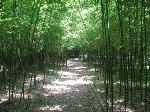
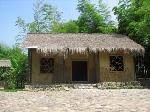
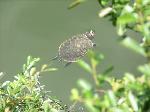
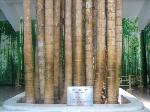
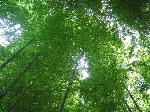

 Copyright © 1998-2025 All rights reserved.
Copyright © 1998-2025 All rights reserved.